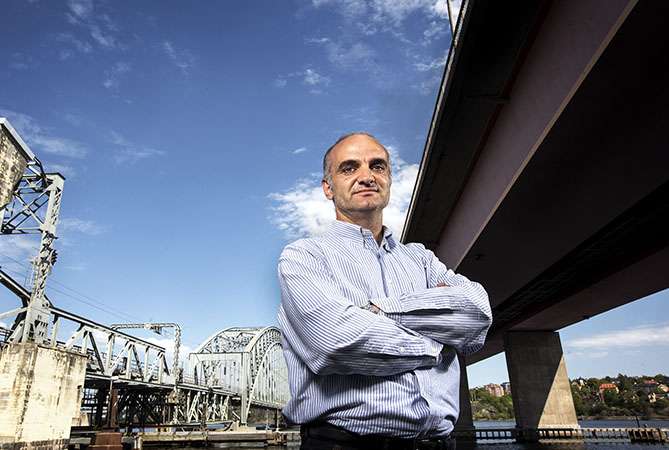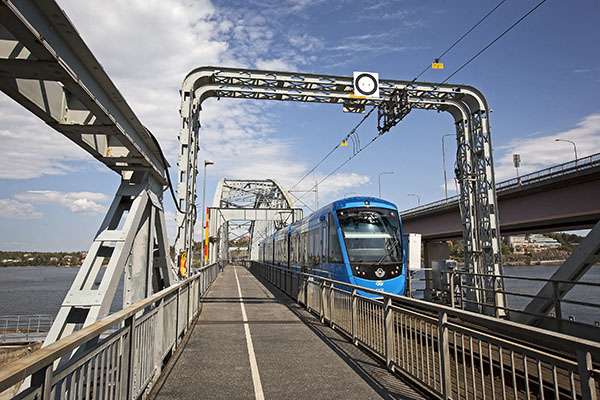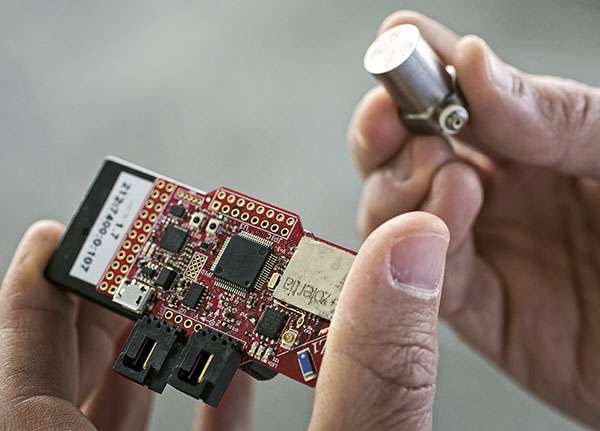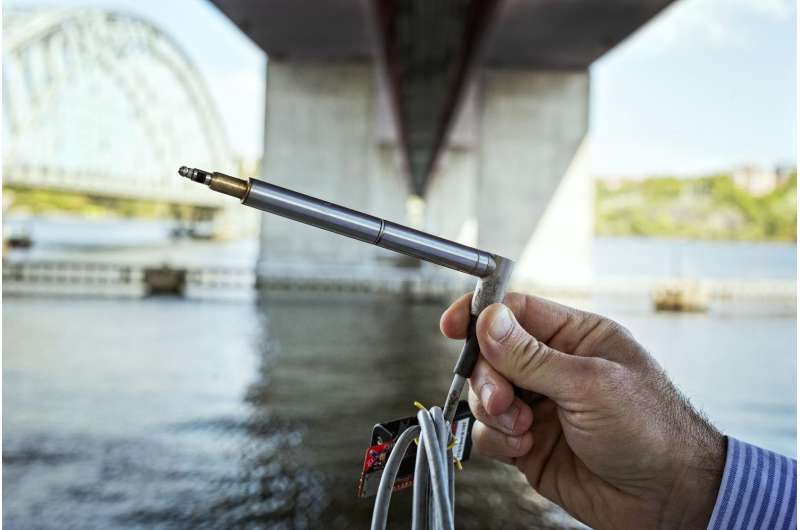Sensors monitor Sweden's bridges – and even enable them to tweet

Bridge collapses are rare, but there have been enough of them to raise concerns in some parts of the world that their condition is not sufficiently monitored. In Sweden however, researchers from KTH Royal Institute of Technology are taking a hi-tech approach to the country's aging infrastructure, with sensors that detect wear and tear on bridges - as it's happening.
The engineer behind the ongoing project, Raid Karoumi, a professor in the division of Structural Engineering and Bridges at KTH, says that while the internet connections aren't a substitute for visual inspections, they do provide valuable information about how bridges are impacted by traffic, wind and temperature fluctuations.
"Just as a doctor places a stethoscope and heart rate sensors on your chest, we put our sensors where we want to monitor the condition of the bridge," Karoumi says. And just like a heart monitor, the sensors pick up deviations that can indicate something is starting to change.
The real-time detection could extend the life of bridges. One older bridge near the KTH campus, which connects the city of Stockholm to Lidingö, a large island in the eastern part of its archipelago, is slated to be replaced in 2020. But the sensors, which will soon be installed, will provide such detailed information about its state that the bridge may be allowed to stand for another 10 years from now, he says.

Bridges undergo change slowly. In the streams of real-time data Sweden's sensors are delivering – as many as 400 pieces of information per second on some bridges – engineers are looking for clues to what causes wear and tear. Karoumi says that with the technology they can detect cracks that aren't even visible to the naked eye.
"Of course you drive still out and look," he adds. "But this technology will help to determine when and where an inspection is required, and it will also provide valuable information to those who perform the inspections. It is costly to block traffic so it is good if the inspections are made when necessary."
But aging bridges aren't the only ones getting connected.
A bridge that connects Sweden and Norway over the Svinesund sound was fitted with 72 sensors when it was completed in 2005. Researchers at KTH have reaped 10 years' worth of data from the specially-designed bridge – which is supported by a single concrete arch.

"For newly constructed bridges, we want to check how they behave," Karoumi says. "You want to confirm that the calculation models used for dimensioning are correct.
"We dimension our bridges for 120 years of life and we want to use the measurements as a kind of footprint that we can compare them with later," he says.
The sensors are operated either with cables or batteries. The idea is that the cordless sensors can be recharged with the energy generated by the oscillations when the bridge vibrates.
"Last year we tested the technology on a railway bridge in Södertälje," he says. "There are various types of energy collection systems. Radio waves can be converted to energy, which we're testing on the Lidingö bridge in collaboration with Uppsala University."

Then there's the micro-blogging bridge, an idea that was scrapped after transport authorities decided it might pose a security risk. The Årsta bridge connecting one of Stockholm's two major islands to the mainland was fitted with wireless sensors capable of sending information 50 times per second to a cloud-based internet service. Reporting such things as how much the bridge oscillates when trains passed over, the results were presented continuously in one app.
Nevertheless, Sweden's bridges are well on the way toward the internet of things, as the KTH researchers continue developing cloud connectivity and artificial intelligence for the sensor system.
"There is a lot of development remaining to be done before we get there," he says. "Our goal is to develop the technology to extend the life of our bridges."
Provided by KTH Royal Institute of Technology



















